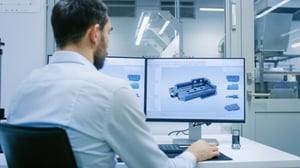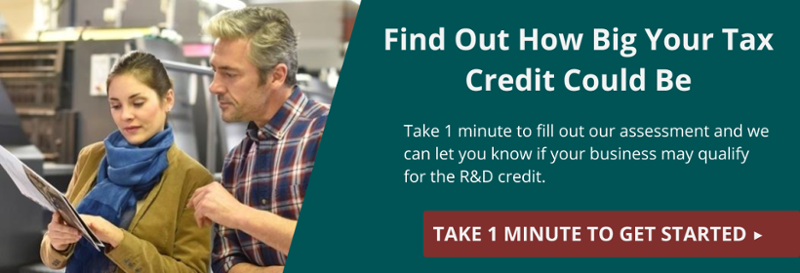You and your team designed and built some pretty cool tools to complete your latest project. It took time, money, and resources to complete.
At times like these, it's easy to get lost in a project — rightfully focusing on the immediate needs of the customer and your team. But, it would be a mistake not to see the bigger picture because you could miss out on valuable tax credits that could help your business grow.
What do we mean? Well, all that work your team put into building tools for the project could qualify for R&D tax credits. Here's how.
The Four-Part Test
For any activity to qualify as R&D, it must first pass the Four-Part Test. To meet these criteria, time spent by all personnel (including engineers, tool designers, tool makers, apprentices, shop floor personnel during try-out, quality labs, and all direct supervisors) must involve each of the following aspects:
- Permitted Purpose. This is the activity intended to make or improve either a product or process that results in improved function, performance, reliability, quality or cost efficiency.
- Technical Uncertainty. This is the activity intended to eliminate technical uncertainty when developing or improving a product or process related to methodology, design, techniques, formulas or inventions.
- Process of Experimentation. This is the activity that includes a process of experimentation to eliminate or resolve technical uncertainty. During the process, various alternatives and approaches are evaluated by modeling, simulation, trial and error, prototyping and other methods.
- Technological in Nature. The process of experimentation must rely on the hard sciences (engineering, physics, biology, chemistry, computer science).
 The Four-Part Test is an easy way to gauge whether or not your tool design and building activities meet R&D tax credit standards. But, it's only a rough guide. For a more detailed assessment, you have to look at each process individually.
The Four-Part Test is an easy way to gauge whether or not your tool design and building activities meet R&D tax credit standards. But, it's only a rough guide. For a more detailed assessment, you have to look at each process individually.
Tool Design Process
In the same way that flat blank design can qualify for R&D credits, so, too, can tool design.
Qualified activities:
- Design of all tooling needed to produce the product
- Production drawings
- Tooling layout
- Design changes to improve the tooling for cost, quality, or performance
Unqualified activities:
- Minor maintenance-related repairs with no design change
Tool Building Process
Once tool design is complete and handed off to the tool makers, additional qualifying activities surrounding the tool manufacturing begin to take place.
Qualified activities:
- Time directly related to building tools
- Wire EDM
- Grinding
- Milling
- Assembly
- Try-out and quality check
Unqualified activities:
- Minor maintenance-related repairs with no design change
These lists are by no means exhaustive, so it's best to consult an R&D tax credit expert to find out exactly which part(s) of your internal processes meet R&D requirements.
Trial Process
Once design and building are complete, it's time for the trial phase to begin. This phase also includes opportunities for qualifying R&D activities.
For example, if you're forming tempered spring steels, the tool maker and designer will take their best-educated guess in the design and manufacture of the tool. The semi-unpredictable spring-back of tempered steels may require additional trials and tool adjustments to refine the process after die try-out. The time spent in the trial process by engineers, tool designers, tool makers, apprentices, shop floor personnel during try-out, quality labs, and all direct supervisors would likely qualify as R&D.
Remember: If you had some uncertainty going into the project and overcame that uncertainty in production, you're doing R&D to create a new process to manufacture that specific part. It's as simple as that.
As you can see, numerous aspects of your tool design and building process may qualify for R&D tax credits. It's only by examining these procedures and consulting with a tax professional that you will truly extract the most value from your manufacturing operations.





